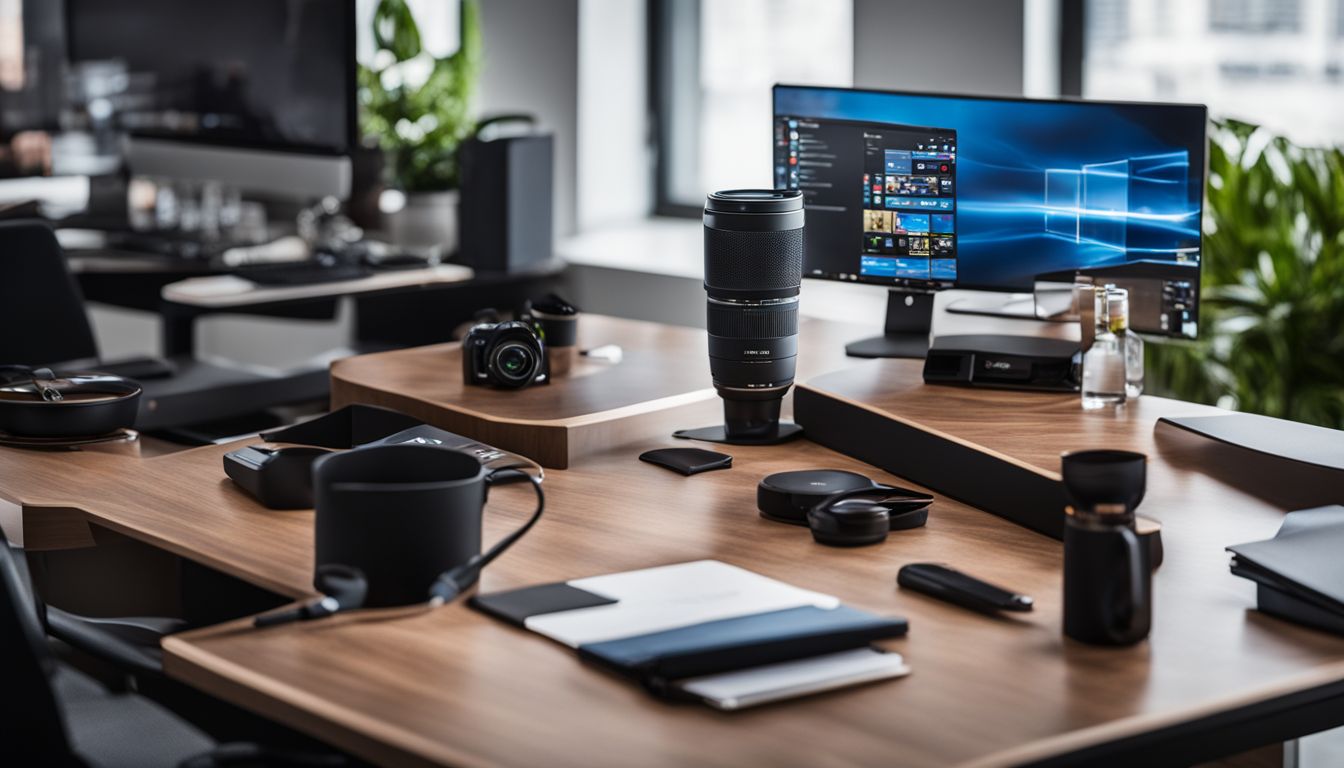
Published on:

Published on:
Are you curious about the rollercoaster journey of a once-popular party necessity? The 180 Cup, combining a drinking cup and shot glass, was an instant hit for its novelty. This blog will walk you through its exciting rise to fame and sudden fall, offering insights into what went right and wrong.
Stick around—you might just learn something unexpected!

180 Cup started with a simple idea—turning party cups into double-duty wonders. Its founder, aiming at college students and frat houses, combined a drinking cup with a shot glass to kick off the party right.
The 180 Cup is a game-changer for partygoers and tailgaters. It cleverly combines a drinking cup on one end with a shot glass on the other. This design makes it perfect for events where both shots and standard drinks are served, cutting down on the need for extra glasses.
College students, frat houses, and anyone looking to streamline their party setup quickly embraced it.
Social media buzz and word-of-mouth played huge roles in catapulting its popularity. Soon, the innovative cup wasn’t just an online sensation; it hit retail shelves nationwide. The company didn’t stop there—it broadened its offerings by adding lids, straws, and carrying cases to complement the cups.
These steps ensured that 180 Cup stayed relevant in competitive markets like college parties and social gatherings.
Solomon Fallas stepped into the spotlight with a unique idea, founding 180 Cup. His innovation aimed to change how party-goers enjoyed their drinks, blending functionality and fun in a single product.
With his entrepreneurial spirit, Solomon took a simple concept – a cup that doubles as both a drinking vessel and a shot glass – and turned it into a business venture, catching the eye of investors and shoppers alike.
After making waves on Shark Tank where Daymond John saw potential in his vision, investing $300,000 for equity in the company, Solomon’s journey took an unexpected turn. Despite the early success and promising start, challenges led 180 Cup out of business.
Showing resilience typical of entrepreneurs, he shifted gears completely by moving into the sock industry with Collective Soles. This pivot underscores not just the unpredictable nature of startups but also highlights Solomon’s ability to adapt and persevere through tough times.

180 Cup made a bold move, stepping onto the Shark Tank stage. They caught the eye of an investor, sparking interest and opening doors for their future.
Solomon Fallas took the stage on Shark Tank with confidence, showcasing his innovative 180 Cup. His idea tapped into the massive market of college parties, revolutionizing how students drink at these events.
By flipping the cup 180 degrees, it became a dual-purpose party essential — one side for a regular drink and the other for shots.
Daymond John saw potential in this unique solo cup and decided to invest $300,000 for a 25% share. The pitch was clear: transform every party with one simple flip. This investment aimed at pushing the product into retailers and expanding its presence beyond just online sales through strategic marketing and advertising efforts.
After a compelling pitch on Shark Tank, Daymond John saw potential in the 180 Cup and decided to invest. He offered $300,000 for a 25% ownership stake. This was a strategic move, hoping to leverage his marketing expertise and connections to boost the party cup’s sales and visibility.
Daymond John’s involvement brought immediate attention to the brand. The investment signaled confidence in the product’s market expansion potential. However, not all went smoothly—Fallas’ decision to decline an endorsement deal with Lil Jon led to tensions.
These disagreements eventually caused strain in their partnership, impacting future collaborations and growth strategies for 180 Cup.
After Shark Tank, the journey of 180 Cup took some exciting turns. They worked hard to grow and face new challenges head-on, always looking for ways to stand out in a crowded market.
The 180 Cup saw its business soar, thanks in part to clever marketing strategies and a strong online presence. They took to the internet, using social media platforms and electronic communications to spread the word.
People started talking, and soon enough, word-of-mouth recommendations were echoing across various user profiles on the web. This buzz helped them reach customers far beyond their initial scope.
Expanding their product line was a smart move too. By adding lids, straws, and carrying cases, they tapped into a larger market of solo cups enthusiasts looking for more convenience.
Selling these accessories not only increased their valuation but also made shopping at popular platforms like amazon.com even more enticing for buyers. Their approach – understanding customer needs and responding with innovative solutions – fueled their growth further.
180 Cup faced tough times despite a hopeful start. Sales skyrocketed after Shark Tank, reaching $385k, but the success didn’t last. Disagreements broke out between Solomon Fallas and Daymond John over how to run the company.
These conflicts hurt their partnership and slowed down progress.
The company tried expanding into retail stores and online, aiming for more customers. However, challenges piled up quickly. The market was fierce, with competition from other sellers making it hard to stand out.
Ultimately, these issues led 180 Cup to shut down operations in 2016, closing a chapter on what seemed like a promising venture.
Peeking into 180 Cup’s wallet reveals a journey of ups and downs. Let’s dive in, exploring how market shifts and decisions shaped its worth today.
The 180 Cup hit the ground running with a valuation of $2 million on Shark Tank. This clever cup caught the eye of an investor, sparking excitement and possibilities. Fast forward to the present, though, and things look very different.
The net worth of 180 Cup has plummeted to $0. Yes, you read that right—zero dollars. The journey from millions to nothing is a tale of challenges and setbacks.
Despite this drastic drop in value, it’s important to understand what influenced such a change. Market dynamics, competition, and operational hurdles all played their part in redefining the company’s financial standing.
It wasn’t just one thing but a combination that steered 180 Cup towards closure.
Several factors played a big role in the net worth of 180 Cup, driving its value up and then down. Daymond John’s $300,000 investment for a stake in the company gave it an initial boost.
This partnership helped expand their product line—adding lids, straws, and carrying cases to their offerings. Innovations like these were key to growing the business.
However, challenges emerged that impacted the net worth negatively. Solomon Fallas and Daymond John faced disagreements on how to run things, leading to tension within management. Moreover, despite early successes in retail stores and online driven by social media buzz, operational issues arose.
Ultimately, these problems led to the company shutting down operations in 2016 with a net worth plummeting to $0. Market dynamics are unpredictable—initial growth doesn’t always predict long-term success.
The 180 Cup, once a rising star after its appearance on Shark Tank, faced tough times and ultimately stopped operations in 2016. Despite its effort to revolutionize party cups with a unique design and added accessories like lids, straws, and carrying cases, challenges led the company to shutter.
Its journey from a popular choice for house parties and barbecues to discontinuation is a stark reminder of how market dynamics can affect businesses.
Looking ahead, there seems little chance for a comeback under the original brand name. However, the concept behind 180 Cup remains influential. Entrepreneurs might draw inspiration from its innovative design integrating cup and shot glass – potentially revisiting this idea with new materials or technology that could better resonate with today’s environmental concerns and lifestyle preferences.
The legacy of 180 Cup underscores an essential lesson: innovation must be coupled with adaptability to survive shifting consumer landscapes.
180 Cup’s journey, from a bright start on Shark Tank to its unexpected closure, shows the unpredictable nature of business. Once valued at $2 million and backed by Daymond John, it faced tough challenges that led to its downfall.
Despite an initial boost in popularity and expansion into big retailers like Walmart, sustaining profitable sales proved too steep a hill to climb. Sadly, this innovative cup’s current net worth stands at zero.
This tale serves as a poignant reminder of how crucial adaptability and market understanding are in the ever-evolving world of startups.
For related insights, check out our analysis on the net worth of 54 Thrones to understand their financial journey in comparison.
The 180 Cup caught everyone’s attention by solving a common party problem—how to hold your drink and shot in one cup. This simple yet genius idea quickly became popular, making its value shoot up as people everywhere started using them at parties.
Well, like many trends, the initial excitement around the 180 Cup began to fade. Other companies started creating similar products, and the novelty of the 180 Cup wasn’t as strong. Plus, they faced challenges in keeping their product fresh and appealing to customers over time.
Finding an exact number for today’s net worth can be tricky without peeking into their latest financial reports or announcements from their team. However, it’s clear that they’ve had to adapt and fight hard to maintain relevance in a competitive market.
Absolutely! With some creative thinking, maybe diving into new markets or innovating their product line—they could capture our interest all over again. It’s all about staying relevant and connecting with what party-goers need now.